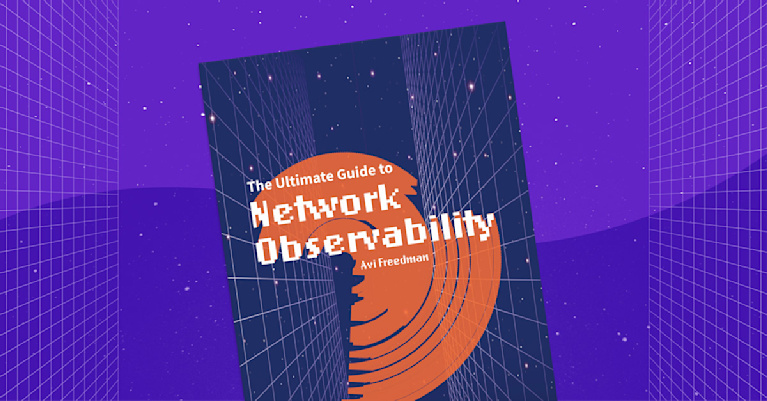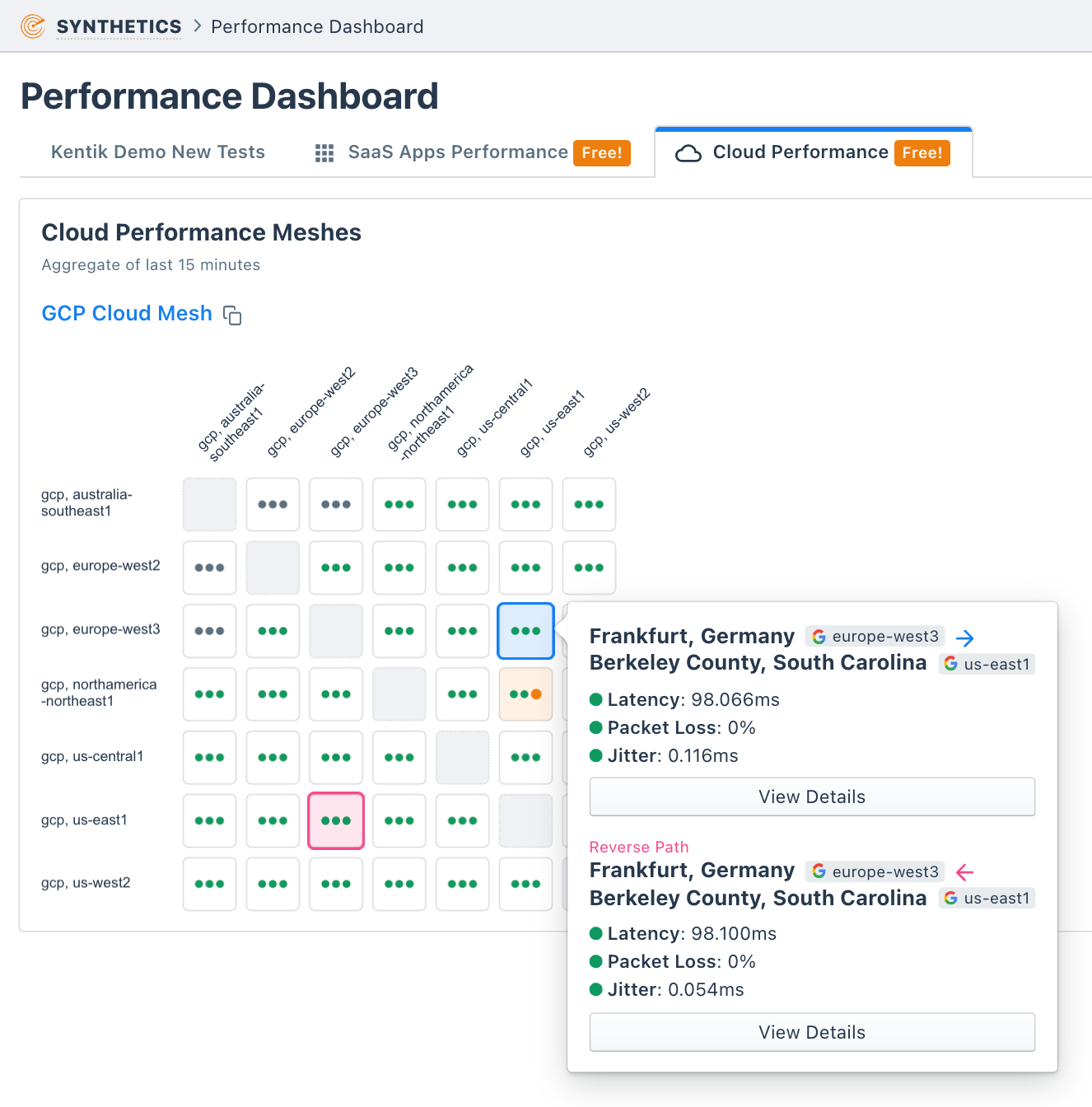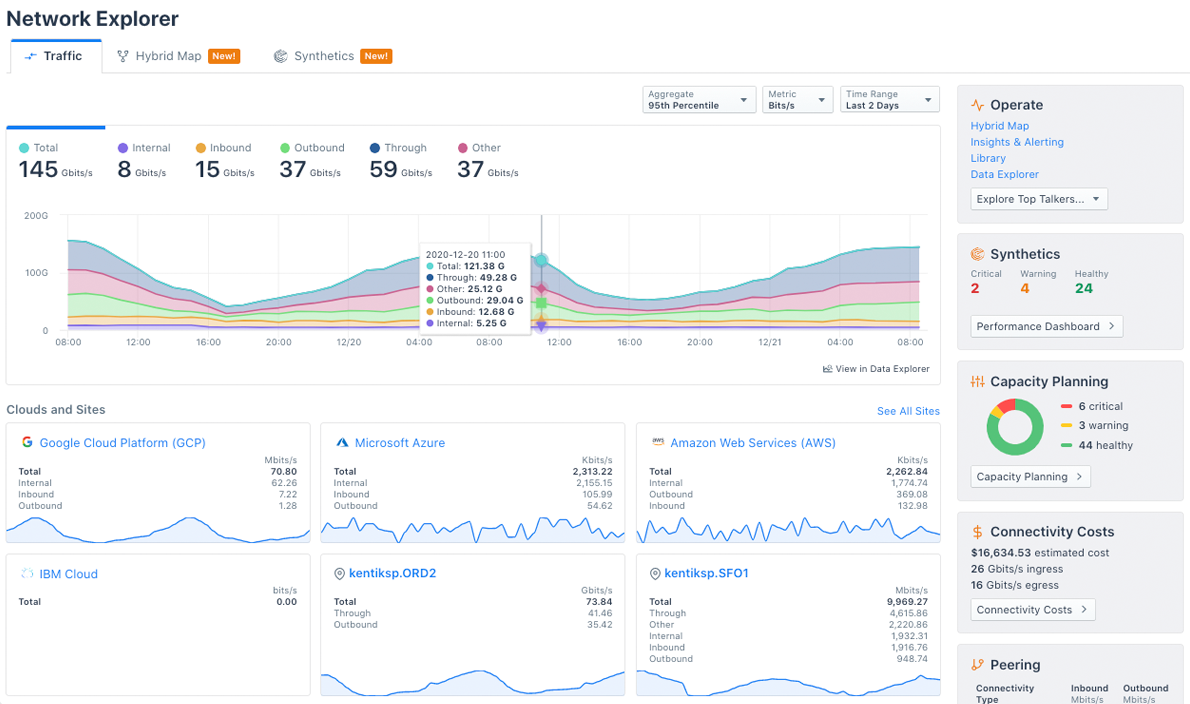What is Network Optimization? 9 Techniques for Improving Network Performance
Networks are essential to modern business and improving network performance is more valuable than ever. Network optimization is the process of improving network performance in terms of speed, reliability, capacity, and security. This article discusses the ins and outs of network optimization, best practices for improving the performance of a network, and the role of network observability in optimizing today’s networks.
What is Network Optimization?
Network optimization is a data-driven process aimed at enhancing network performance and efficiency. It involves measuring performance metrics such as latency, throughput, and packet loss, then making strategic changes to remove bottlenecks and optimize network resources. Techniques include traffic analysis, infrastructure design, bandwidth management, and protocol optimization. The ultimate goal of network optimization is to convert your network into a competitive advantage for your business by ensuring optimal performance and reliability.
Network optimization is an ongoing process that must adapt to evolving network conditions, business needs, and technological advancements. A key factor in achieving consistently high performance and meeting the needs of users and applications is the role of network observability in network optimization. Network observability helps in understanding the internal state of the network and how it impacts business objectives and user experience. By collecting, contextualizing, and analyzing network telemetry data, network observability solutions provide critical insights into network performance and enable swift action to address any performance issues.
Why is Network Optimization Important?
Network optimization is crucial for numerous reasons, mainly concerning connectivity, speed, user experience, productivity, and cost-efficiency. At its core, an optimized network guarantees smooth and reliable connectivity. It ensures that data transmission occurs at the highest possible speed, thereby reducing delays and improving the efficiency of operations.
Enhanced user experiences are another critical benefit of network optimization. Optimization techniques ensure users can access and use network resources without interruption or slowdown by reducing latency, minimizing packet loss, and effectively managing network traffic. This increases user satisfaction, promoting loyalty and fostering positive interactions with network-dependent services.
The definitive guide to running a healthy, secure, high-performance network

Network Performance Metrics
Assessing the performance of a network involves tracking and analyzing various metrics, each providing a unique perspective on how effectively the network is functioning. Here are several important metrics that network administrators monitor to evaluate and optimize network performance:
Latency
Latency refers to the time it takes for a data packet to travel from its source to its destination within a network. High latency can lead to noticeable delays in data transmission, negatively affecting the performance of real-time applications such as video conferencing, online gaming, or VoIP services. Network optimization often focuses on reducing latency to ensure swift, smooth data transmission. Learn more about monitoring packet loss and latency here.

Throughput
Throughput measures the volume of data that can be transferred over a network in a specified period. Higher throughput indicates a more efficient network that can handle larger data volumes effectively. Strategies for network optimization often aim to maximize throughput to ensure the network can handle data-intensive applications and high-traffic periods.
Packet Loss
Packet loss occurs when one or more packets of data traveling across a network fail to reach their intended destination. This can lead to network slowdowns and degrade the quality of services reliant on steady data streams, such as VoIP calls or video conferences. Minimizing packet loss is a key area of network optimization, ensuring smooth and uninterrupted data transfer.
Jitter
Jitter represents the variability in the time between the arrival of data packets, often caused by network congestion, timing drift, or route changes. High jitter can result in poor quality for real-time services such as video streaming or VoIP calls, because it disrupts the steady flow of data packets. Network optimization techniques aim to minimize jitter, enhancing the quality and reliability of real-time data transfer. Learn more about understanding latency, packet loss, and jitter in networking here.
Bandwidth
Bandwidth represents the maximum data transfer capacity of a network at any given point in time. It’s a critical factor in determining how many tasks a network can handle simultaneously. Adequate bandwidth is essential for preventing network congestion and ensuring the network can support the required data transfer volume, particularly during peak usage periods.
Network Availability
Network availability measures the amount of time a network is up and running versus the total time. Often expressed as a percentage, high network availability is vital for ensuring consistent, uninterrupted access to network resources and services. Network optimization often involves measures to increase network availability, reducing the incidence of unplanned outages.
Error Rate
The error rate measures the number of errored bits or packets divided by the total number sent. A high error rate could indicate problems with the network devices, connections, or signal interference. Network optimization includes reducing error rates, ensuring data is transmitted accurately and reliably.
Response Time
Response time measures the time it takes for a request to travel from a sender to a receiver and for the receiver to process that request and return a response. It’s a critical metric for applications where real-time interaction is necessary. Optimization strategies aim to reduce response times, providing a more efficient and user-friendly network.
Understanding and tracking these metrics is essential to network optimization, helping identify potential issues, understand network performance, and make informed decisions about network adjustments or upgrades. Learn more about network performance metrics here.
9 Techniques and Best Practices for Improving Network Performance
1. Assess Network Requirements
Before embarking on network optimization, a comprehensive understanding of your network’s requirements is essential. This includes assessing bandwidth needs, the demands of different users, application-specific requirements, and soliciting stakeholder input to gain a comprehensive overview of your network.
Regular network audits can provide insights into resource usage and potential bottlenecks, setting the stage for effective network optimization. These audits should incorporate real-time monitoring, trend analysis, and predictive modeling to help you stay ahead of future network demands.
Understanding your network’s traffic patterns, peak usage hours, and the most commonly used services can guide your optimization efforts, ensuring efficient resource allocation. This data-driven approach can enable your network to handle current and anticipated requirements effectively.
2. Implement Traffic Analysis
Analyzing network traffic patterns is a cornerstone of network optimization. Network monitoring tools such as Kentik’s Network Observability Cloud offer visibility into bandwidth-intensive applications and optimize traffic flow, ensuring that mission-critical applications receive priority.
Quality of Service (QoS) techniques can be used to prioritize network traffic, enhancing network performance by ensuring critical applications always have the necessary resources. Kentik’s advanced traffic analysis can also identify potential security threats, contributing to proactive network defense.

3. Optimize Network Infrastructure
A well-designed network infrastructure is foundational for optimal network performance. This involves carefully selecting and configuring network hardware, such as routers, switches, and cables.
Investing in high-performance network devices capable of supporting the latest applications and managing increasing data volumes is critical. Regular firmware and software updates on these devices keep your network compatible with emerging technologies and security standards.
An optimized network infrastructure should support current needs and be scalable for future growth. Implementing modular designs, virtualization, SD-WAN techniques, and ensuring redundancy can contribute to a resilient, scalable, and flexible network infrastructure.
4. Use Bandwidth Management Techniques
Efficient bandwidth management is crucial for maintaining high network performance. Techniques such as bandwidth throttling and traffic shaping help manage network resources effectively.
Prioritizing network traffic that supports business-critical operations is essential. Understanding how different applications use bandwidth and their impact on business processes enables targeted bandwidth allocation. This ensures that vital operations never face interruptions due to insufficient network resources.
5. Ensure Network Security
Robust network security is a vital aspect of network optimization. Cybersecurity threats can significantly degrade network performance and disrupt critical business operations. Therefore, your network optimization strategy should include robust measures against both internal and external threats.
Key network security components include Distributed Denial of Service (DDoS) detection, protection, and mitigation. Advanced DDoS protection solutions accurately detect and swiftly respond to these threats, maintaining network performance and availability.
Implementing firewalls, intrusion detection systems (IDS) and conducting regular security audits, vulnerability assessments, and penetration testing offers comprehensive protection. Encryption of sensitive data adds another layer of security, maintaining network integrity and, in turn, enhancing network performance.
Learn more in Kentik’s “NetOps Guide to Network Security.”
6. Configure Network Protocols for Performance
Network protocols and their configurations significantly influence network performance. Adjusting settings in TCP/IP, such as window size, congestion control mechanisms, and packet size, can enhance network speed and reliability.
Understanding your network traffic characteristics and configuring network protocols accordingly can improve network performance. For instance, if your network primarily supports applications that require reliable data delivery, TCP might be a more suitable choice. On the other hand, UDP could be a better fit for real-time applications where speed is more critical than 100% delivery reliability.
A migration to IPv6 could be beneficial in the long term due to its improved addressing capabilities, better security features, and built-in support for newer internet standards compared to IPv4.
7. Continual Network Monitoring and Maintenance
Network monitoring and maintenance are non-negotiable aspects of network optimization. Deploying network monitoring tools like Kentik allows for proactively identifying and resolving issues, reducing the likelihood of network outages and enhancing network performance.
Continuous monitoring provides real-time insights into network performance. This enables IT teams to identify and address issues immediately, ensuring minimal downtime and maintaining high service quality.
Maintenance tasks like regular hardware and software updates, firmware upgrades, and routine network health checks are integral to an optimized network. These tasks help keep your network running smoothly and ensure that it is protected against the latest known security threats.
Performance testing should also be conducted regularly to understand how your network responds under different loads. This testing can help identify weak points in your network that could be improved for better performance.
Maintaining comprehensive and up-to-date documentation of your network infrastructure, including hardware, software, configurations, and changes, can help streamline network management and maintenance tasks.
8. Employ Network Capacity Planning Techniques
Effective network capacity planning is a fundamental part of optimization. This involves assessing current utilization rates and predicting future network needs based on business growth and technology trends. Modern capacity planning solutions provide detailed visibility into network usage and can identify trends, aiding both short-term and long-term capacity planning. This ensures your network can handle growth without compromising performance, making it prepared not just for today’s demands but also for future challenges.

9. Cloud Networking Optimization
Optimizing cloud network performance has become crucial with the move to the cloud well underway. Strategies should focus on reliable connectivity between on-premises environments and the cloud using solutions like Direct Connect (AWS) or ExpressRoute (Azure). Monitoring network and application performance in the cloud is also important, with tools like Kentik providing valuable insights. Implementing robust security measures like zero-trust is necessary in cloud environments where network perimeters can blur. A well-optimized cloud network enhances agility, scalability, and results in significant cost savings.

Network optimization is a continuous process that should adapt to changing network conditions, business needs, and technological advancements. These nine techniques and best practices can significantly improve network performance.
The Role of Network Observability in Network Performance Optimization
Network observability serves as a crucial aspect of network performance optimization. Essentially, it is the ability to swiftly and conveniently answer any question about your network. This means using diverse data sources to comprehend what’s happening inside a network and how the network’s internal state impacts business objectives and user experience. It is the cornerstone of managing the overall performance and reliability of applications and infrastructure, and it’s especially important in today’s era of complex networking configurations and architectures.
Networks play a central role in connecting the various parts of a software stack and delivering applications to users. Modern networks often span multiple data centers and/or clouds, with configurations defined in software and continuously changing. This dynamism can make it challenging to comprehend the state of the network at any given moment. Rapid fluctuations in network configurations and traffic patterns make it harder to identify anomalies that could signal performance or availability issues. Network observability counters this challenge, providing continuous visibility into networks and helping teams align network data with business contexts. It empowers organizations to manage the complexity of modern networks and ensure they support business requirements.
Network observability stands on three key pillars:
-
Telemetry: Telemetry is the data that allows teams to understand the internal state of the network based on external outputs. This includes data sources like flow logs, routing tables, application latency, and performance testing data.
-
Data platform: A data platform ingests diverse telemetry data, then contextualizes and enriches it. This empowers teams to ask and answer meaningful questions about the network’s state. For example, a data platform could map network performance data to users and applications, making it easier to understand how network performance trends impact specific users and apps.
-
Action: Collecting and analyzing network telemetry data is of little value without the ability to act based on the data. Deploying flexible workflows, automations, and integrations allows teams to remediate network performance problems, collaborate in responding to performance issues, and more.
Network observability solutions play a vital role in optimizing the performance of modern networks:
- Through robust telemetry, they collect critical data such as flow logs, routing tables, application latency, and performance testing data that provide a comprehensive view of the network’s internal state.
- These solutions then leverage powerful data platforms to ingest and contextualize this information, creating meaningful insights about the network’s health, performance, and potential bottlenecks.
- More importantly, these platforms link network performance data to users and applications, offering actionable insights into how network behavior impacts user experience and application performance.
- Lastly, equipped with the capacity for action, network observability solutions allow teams to deploy flexible workflows, automations, and integrations that swiftly respond to and remediate network performance issues.
Network observability solutions optimize network performance, improve end-user experience, and ensure business objectives are met by enhancing visibility, facilitating analysis, and enabling swift action.
Network Performance Optimization with Kentik
Network optimization is a strategic process that boosts network performance, improves user experiences, and promotes cost efficiency. Many aspects of network optimization—like ensuring network security, managing traffic, and making strategic infrastructure decisions—are implicitly tied to understanding network performance, which is exactly what Kentik provides.
The Kentik Network Observability Platform empowers NetOps professionals to plan, run, and fix any network. Kentik’s network monitoring solution addresses all three pillars of modern network monitoring, delivering visibility into network flow, powerful synthetic testing capabilities, and Kentik NMS, the next-generation network monitoring system.
With Kentik, you can reap the benefits of network observability, and enhance your network performance optimization efforts. To see how Kentik can bring the benefits of network observability to your organization, start a free trial or request a personalized demo today.


